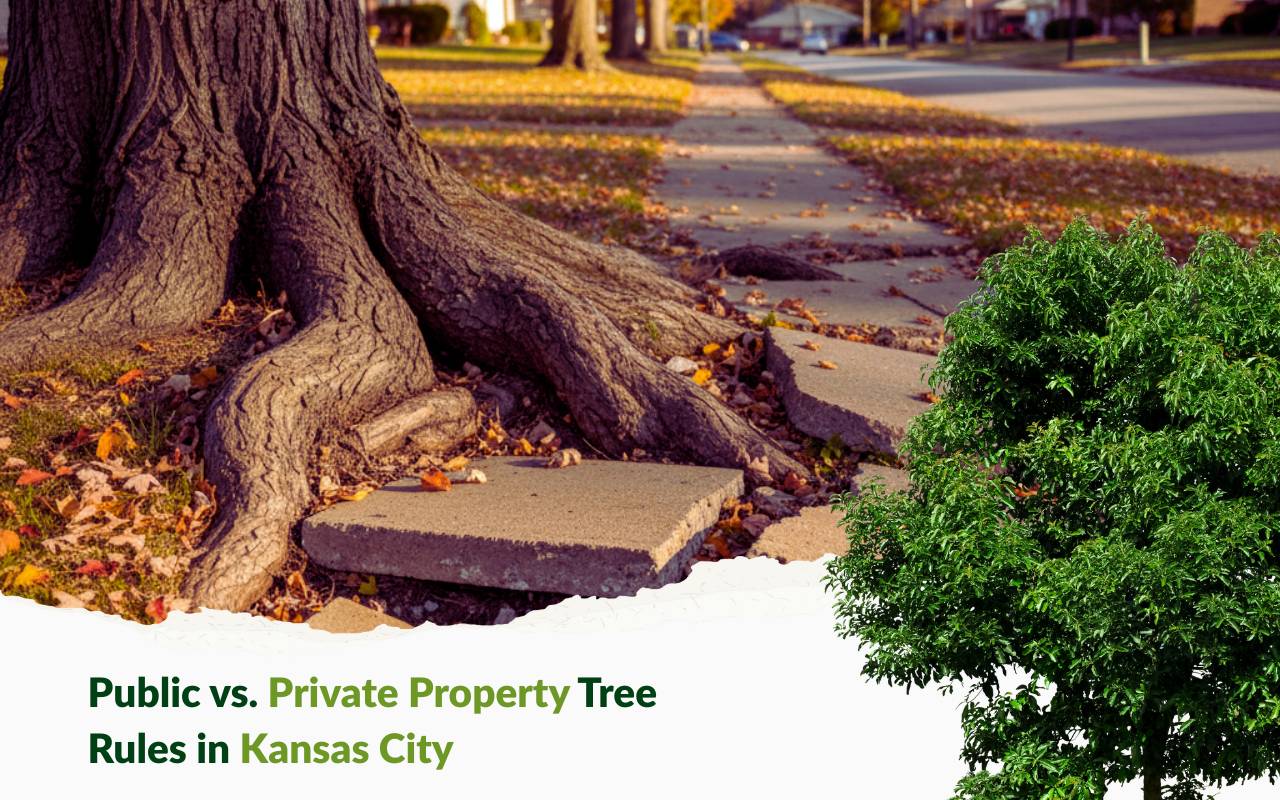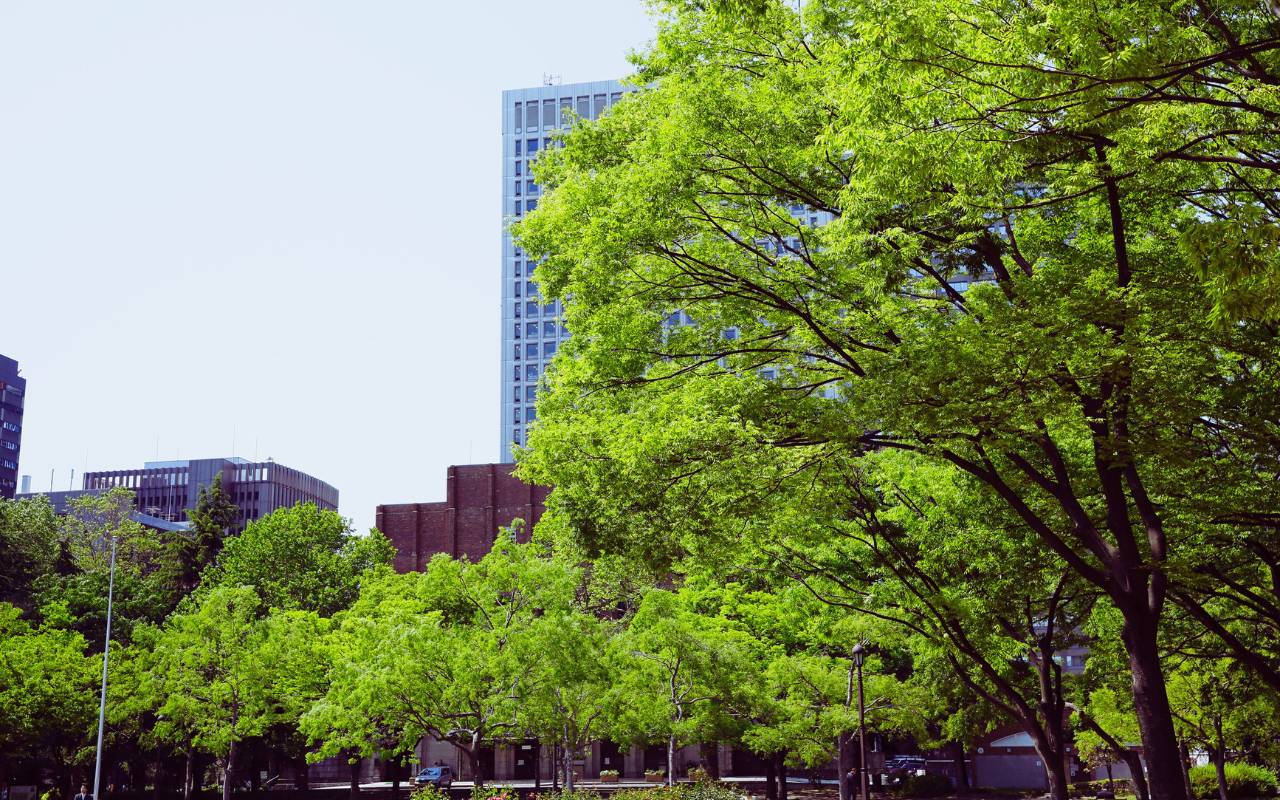
In Kansas City, trees shape the city’s beauty and environmental balance. Whether on public or private property, they bring value and life. However, root damage signs in Kansas City trees can create complex issues that affect safety and property. Understanding local tree rules ensures responsible care and compliance with city standards.
Roots often cause heaving soil indicators or sidewalk lifting by roots, which may signal infrastructure problems. Additionally, property owners must stay alert to declining canopy symptoms or water line interference that could threaten both trees and buildings. Learning Root damage indicators helps identify when to act before damage spreads. Knowing when roots threaten foundations also protects homes and walkways across the city.
Public Tree Regulations in Kansas City
Public trees, maintained by the Forestry Division, follow strict city ordinances. These rules regulate planting, trimming, and removal activities. The division routinely checks for root damage signs in Kansas City trees and related issues such as heaving soil indicators. When crews detect sidewalk lifting by roots or declining canopy symptoms, they act quickly to prevent hazards.
- City staff monitor trees near sidewalks, parks, and roads.
- They address water line interference to protect underground utilities.
- Residents must report any damage or safety concerns promptly.
Pruning or removing public trees requires authorization. Unauthorized actions may result in fines or restoration fees. When city crews manage dangerous trees, they inspect surrounding areas to ensure roots do not cause future problems. To request maintenance or report an issue, contact the Forestry Division or use the online portal for updates.
If you need professional help identifying root damage signs in Kansas City trees, reach out through the Contact page for expert support.
Private Tree Regulations in Kansas City
Private property owners are responsible for their own tree care and potential damage. City codes require addressing when roots threaten foundations to maintain structural safety. Homeowners should also monitor declining canopy symptoms to avoid falling branches or decay.
- Manage overgrown roots causing heaving soil indicators.
- Repair any sidewalk lifting by roots on private land.
- Consult arborists for water line interference issues.
Tree removal or large pruning often requires a permit, especially when roots affect public right-of-way. Failing to obtain proper permits can lead to penalties or repair obligations. Homeowners should always coordinate with certified arborists before digging or pruning near underground utilities.

Variations in Maintenance Responsibilities
Maintenance duties differ between public and private properties. The city handles trimming and pruning for public trees, while homeowners manage those on private land. This distinction prevents disputes and ensures public safety. Watching for root damage signs in Kansas City trees helps avoid costly repairs.
- City crews trim branches obstructing roads or power lines.
- Homeowners inspect roots near basements or driveways.
- Both parties must report any water line interference.
By observing these responsibilities, residents contribute to a safer and greener city. Regular inspection for heaving soil indicators or sidewalk lifting by roots supports long-term tree health.
Permit Requirements for Public Trees
Before pruning or removing public trees, residents must obtain a permit from the Forestry Division. This step ensures all work meets safety and environmental standards. The application process includes an assessment of root damage signs in Kansas City trees and related infrastructure concerns.
Applicants should include photos if roots cause sidewalk lifting by roots or water line interference. City crews or approved contractors perform the work under supervision once approved.
Permit Requirements for Private Trees
Private tree work also requires permits in many cases. Homeowners must apply if a tree is large or near public areas. If roots threaten foundations or disrupt utilities, an inspection ensures safety. Contractors must follow best practices and city guidelines during removal or pruning.
Ignoring permit rules can lead to fines or stop-work orders. Always verify compliance before starting any project involving root or canopy management.
Tree Removal Guidelines for Public Property
The Forestry Division manages tree removal for public safety. When trees show declining canopy symptoms or heaving soil indicators, the city inspects and removes them if necessary. This process prevents hazards like falling branches or damaged sidewalks.
After removal, crews grind stumps and replant to preserve green space. Regular maintenance prevents repeated sidewalk lifting by roots or underground interference.
Tree Removal Guidelines for Private Property
Private tree removal requires careful evaluation. Homeowners must ensure that roots threatening foundations or water line interference are properly addressed. Certified arborists can recommend safe removal techniques and replacement options.
Post-removal care often includes stump grinding to stop future heaving soil indicators. Replanting smaller species prevents new root conflicts.
FAQs about Tree Rules and Root Damage in Kansas City
Who is responsible for repairing sidewalks lifted by tree roots?
Property owners usually repair sidewalks affected by sidewalk lifting by roots on private land. The city manages public sidewalks.
Can I trim public trees near my property?
No. You must request a permit from the Forestry Division before pruning public trees.
How do I know if my tree has root damage?
Look for heaving soil indicators, uneven ground, or declining canopy symptoms. These often reveal root damage signs in Kansas City trees.
What should I do if roots interfere with my water line?
Contact a certified arborist to evaluate water line interference. Coordinate with utilities before digging.
Do I need a permit to remove a private tree?
Yes, if the tree exceeds size limits or roots extend near public areas. Always confirm permit requirements first.
Community Resources for Tree Care
Kansas City offers several programs for residents. The Forestry Division provides workshops on detecting root damage signs in Kansas City trees. Local nonprofits also host planting and pruning events. Residents can learn to spot heaving soil indicators or prevent water line interference effectively.
Access these resources to maintain safe and healthy trees. When in doubt, use the Contact form to request expert advice and inspection assistance.
Balancing Urban Greenery with Infrastructure
Understanding public vs. private property tree rules protects both the environment and city infrastructure. Recognizing root damage signs in Kansas City trees and acting responsibly keeps neighborhoods safe. Together, residents and city officials can preserve Kansas City’s canopy for future generations.
For further assistance, visit the Root damage indicators page or reach out through the Contact form to connect with local experts.
